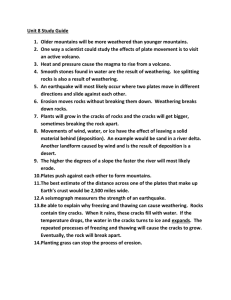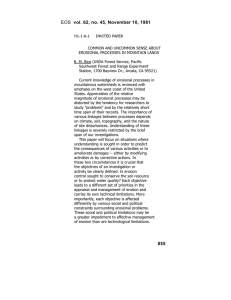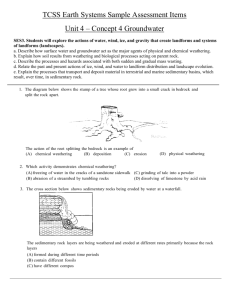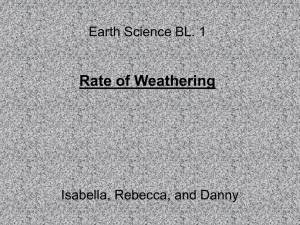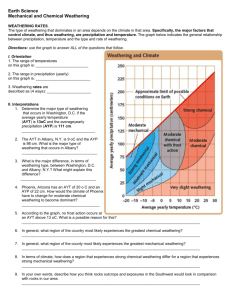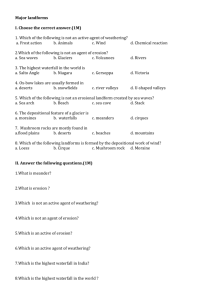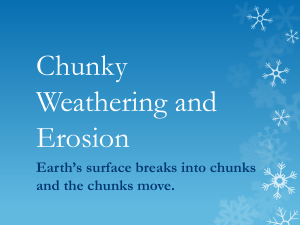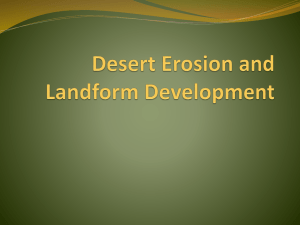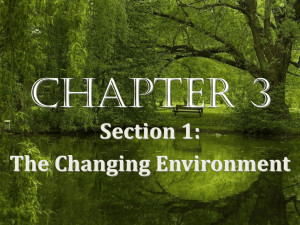Cold Environments revision lesson
advertisement
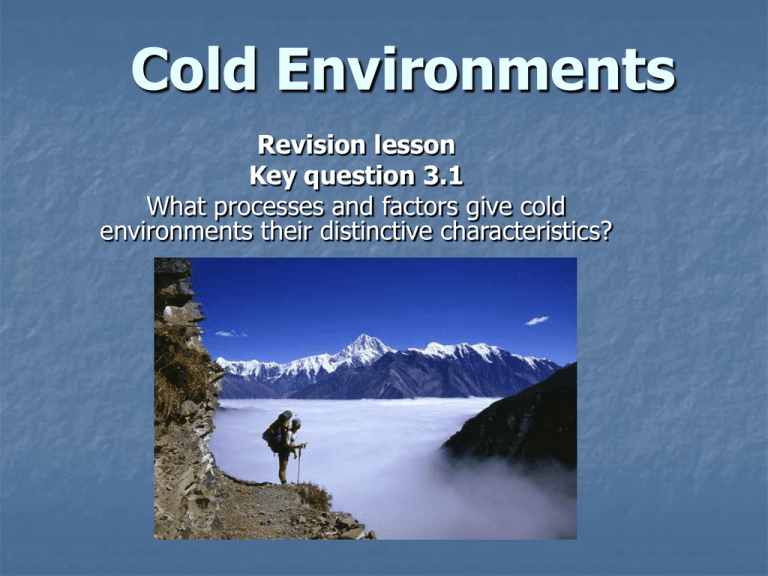
Cold Environments Revision lesson Key question 3.1 What processes and factors give cold environments their distinctive characteristics? Content Climate descriptions What factors result in cold environments? Erosional processes Weathering processes Erosional and Depositional features (maps and photos) Fragile??? Exploitation Sustainable management Climate descriptions You will give an overview of the climate recognising an element of an annual pattern. E.g. ‘A wide range in temperature.’ You will also recognise a seasonal pattern, such as winter/summer. Have a go at CHURCHILL, CANADA. Why do we get cold environments? What differences do you see? Why do we get cold environments? Why do we get cold environments? High Latitude – They receive a relatively small amount of insolation due to the low angle of the overhead sun. Albedo rate – They reflect large amounts of solar Why do we get cold radiation. environments? Average absorption is 40%. Dark soils is 90% and Ice, only High altitude – 10%. Temperatures decline on average of 1 °C per 100m climbed. Why is there limmited precipitation in cold environments? Low air temperatures – Since cold air is only able to hold small amounts of moisture. High pressure conditions - This reduces the amount of precipitation. Why is there limmited precipitation in cold environments? Continentality – In the Arctic, rainfall declines away from oceans as depressions progressively lose moisture. Rainfall Processes in Glacial environments Physical Weathering Freeze Thaw Weathering 1. Rainwater or snow-melt collects in cracks in the rocks. 2. At night the temperatures drops and the water freezes and expands. 3. The increases in volume of the ice exerts pressure on the cracks in the rock, causing them to split further open. 4. During the day the ice melts and the water seeps deeper into the cracks. 5. At night the water freezes again….etc. Chemical weathering by meltwater Especially important on carbonate rocks such as limestone! CO2 is more soluble in water under colder temperatures. Forms a weak Carbonic acid. As the stream becomes more acidic more weathering takes place. Erosional Processes • Plucking Animation Erosional Processes Abrasion Scree Glacial Till Moraines Drumlins Glacial Processes


